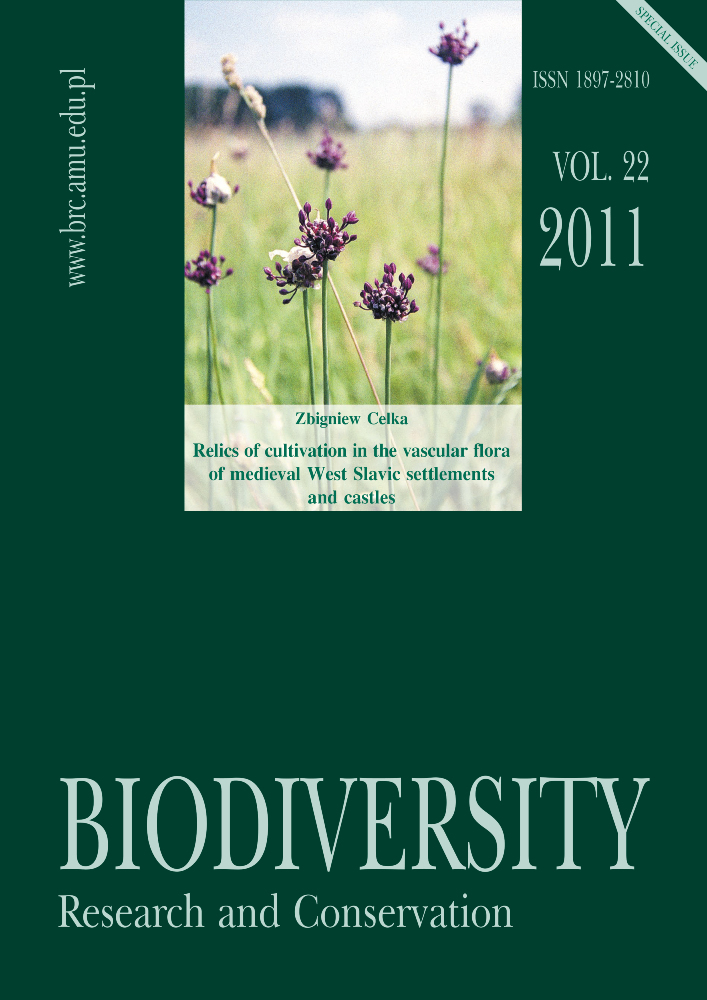Abstract
This monograph presents results of research on relics of cultivation and the present vascular flora of sites of medieval fortified settlements and castles in Central Europe. Special attention was paid to 109 West Slavic sites located in Poland, northeastern Germany, and the Czech Republic. For comparison, floristic data were collected also at 21 sites of medieval settlements and castles of Baltic tribes, East Slavs, and Teutonic knights. Results of this study confirm the hypothesis that remnants of medieval fortified settlements and castles are valuable habitat islands in the agricultural landscape, and are refuges of the plants that have accompanied West Slavs since the Middle Ages. At the 109 West Slavic archaeological sites, 876 vascular plant species were recorded. The present flora of the study sites is highly specific, clearly distinct from the surrounding natural environment, as shown by results of analyses of taxonomic composition, geographical-historical and synecological groups, indices of anthropogenic changes of the flora, and degrees of hemeroby (i.e. human influence) at the studied habitats. The sites of fortified settlements and castles are centres of concentration and sources of dispersal of alien species. Aliens account for nearly 21% of the vascular flora of the study sites. Among them, a major role is played by archaeophytes (101 species). Some archaeological sites are characterized by a high contribution of so-called species of old deciduous forests (98 species). Despite many features in common, floras of archaeological sites vary significantly, depending on their geographical location, size, typology, and chronology of their origin. Historical sites occupied in the past by West Slavs differ in the current vascular flora from the sites occupied in the Middle Ages by East Slavs or Baltic tribes and from Teutonic castles. West Slavic archaeological sites are primarily refuges for 22 relics of cultivation. Considering the time of cultivation, 3 groups of relics were distinguished: (i) relics of medieval cultivation (plants cultivated till the late 15th century); (ii) relics of cultivation in the modern era (introduced into cultivation in the 16th century or later), and (iii) relics of medieval-modern cultivation. These species play a special role in research on the history of the flora of Central Europe and thus also of the world flora. Thus the best-preserved sites of medieval West Slavic settlements and castles should be protected as our both cultural and natural heritage. This work is a key contribution to geobotanical research on transformation of the vegetation associated with human activity. Considering the problem of relics of cultivation it corresponds also to basic ethnobotanical issues.




